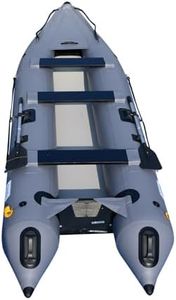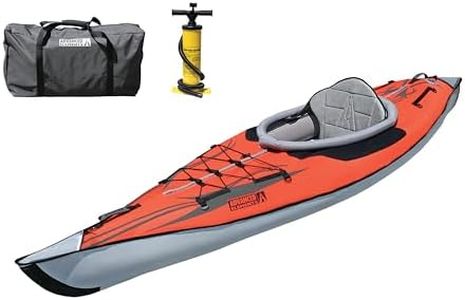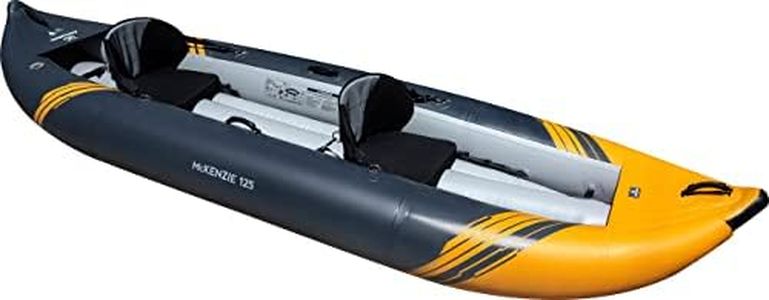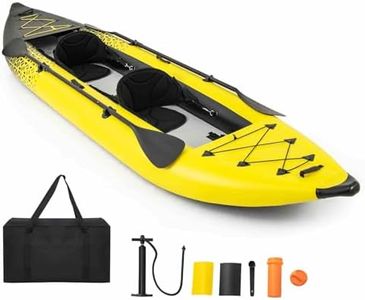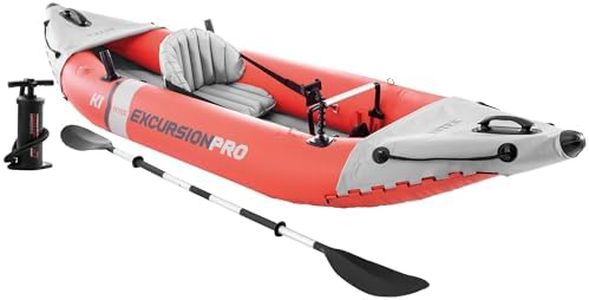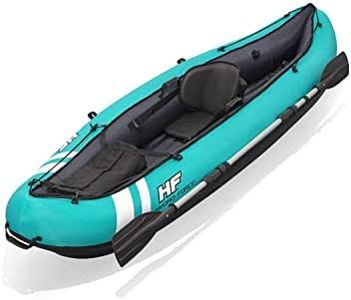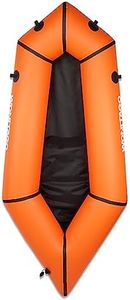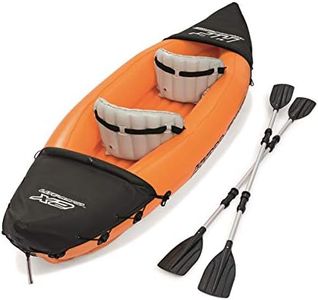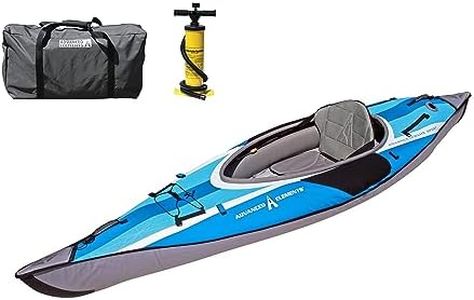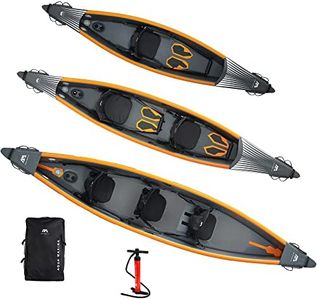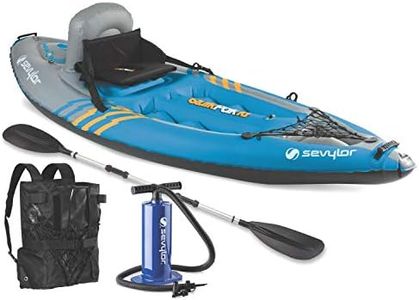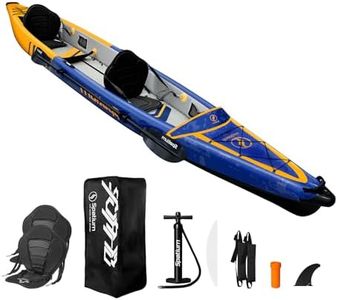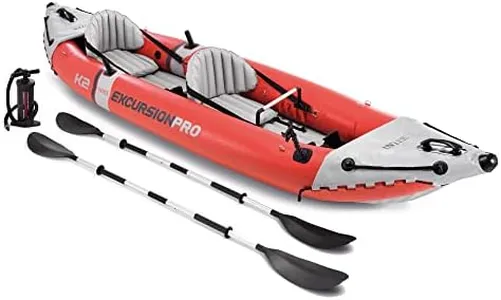We Use CookiesWe use cookies to enhance the security, performance,
functionality and for analytical and promotional activities. By continuing to browse this site you
are agreeing to our privacy policy
10 Best Inflatable Kayak
From leading brands and best sellers available on the web.Buying Guide for the Best Inflatable Kayak
Choosing an inflatable kayak is a great decision if you want a combination of portability, ease of storage, and fun on the water. When selecting the right inflatable kayak, you should focus on how and where you plan to use it: calm lakes, rivers, or even ocean bays. Your activities—whether recreational paddling, fishing, or longer trips—will play a big role in what features matter most to you. Understanding the key specifications will help you match the kayak to your needs for comfort, safety, and performance.Weight CapacityWeight capacity refers to the maximum load, including paddlers and gear, that the kayak can safely support on water. It's important because exceeding this limit can compromise safety and stability. Weight capacities are usually divided into categories such as single-person, tandem (two-person), or family (three or more people). Consider the combined weight of the users and any equipment you might bring. If you paddle solo with minimal gear, a lower capacity will do, but for group outings or fishing with a lot of equipment, choose a kayak with higher capacity.
Length and WidthThe length and width of an inflatable kayak greatly impact how it handles, its speed, and stability. Longer kayaks tend to glide better and move faster, making them suitable for longer distances, while shorter kayaks are easier to turn and more manageable for beginners or those paddling on narrow rivers. Wider kayaks feel more stable, which is great for beginners and fishing, but might be a bit slower. To pick the right size, think about your most common paddling locations: if you prefer stability or will be new to kayaking, choose wider and shorter; for longer, straighter trips, a longer and narrower kayak is better.
Chamber DesignChamber design refers to how many separate air chambers the kayak has. More chambers usually mean better safety, because the kayak can stay afloat even if one section is punctured. Most inflatable kayaks have at least two or three chambers. If you value safety or will be paddling in remote or rough areas, pick a kayak with more chambers. For casual use in safe, shallow waters, a simpler design may be fine.
Material and DurabilityThe material of the kayak affects how tough and long-lasting it is. Common materials include PVC, Hypalon, and Nitrylon, each offering different balances of weight, puncture-resistance, and UV protection. Heavier-duty materials can withstand more bumps and scrapes—important for rivers with rocks or if you have pets onboard—while lighter kayaks are easier to carry and store. Decide on durability based on where you'll paddle and how much handling your kayak will endure.
Setup and PortabilitySetup and portability describe how easy the kayak is to inflate, deflate, pack, and carry. Some kayaks have quick-inflate valves and fold up small, ideal for those with limited storage space or who plan to transport the kayak often. If you want maximum convenience or plan to carry the kayak to remote access points, a lighter and more portable model will suit you. If you typically launch close to your vehicle or have storage space, portability may matter less.
Seating and ComfortThe seating in an inflatable kayak can affect your comfort, especially for longer trips. Look for seat adjustability, back support, and legroom. Some kayaks have removable or padded seats, which are helpful for extended paddling or if you have back issues. Think about how long you'll be on the water and whether you'll paddle with others—more comfortable seating and extra space makes a big difference for extended trips or family outings.
